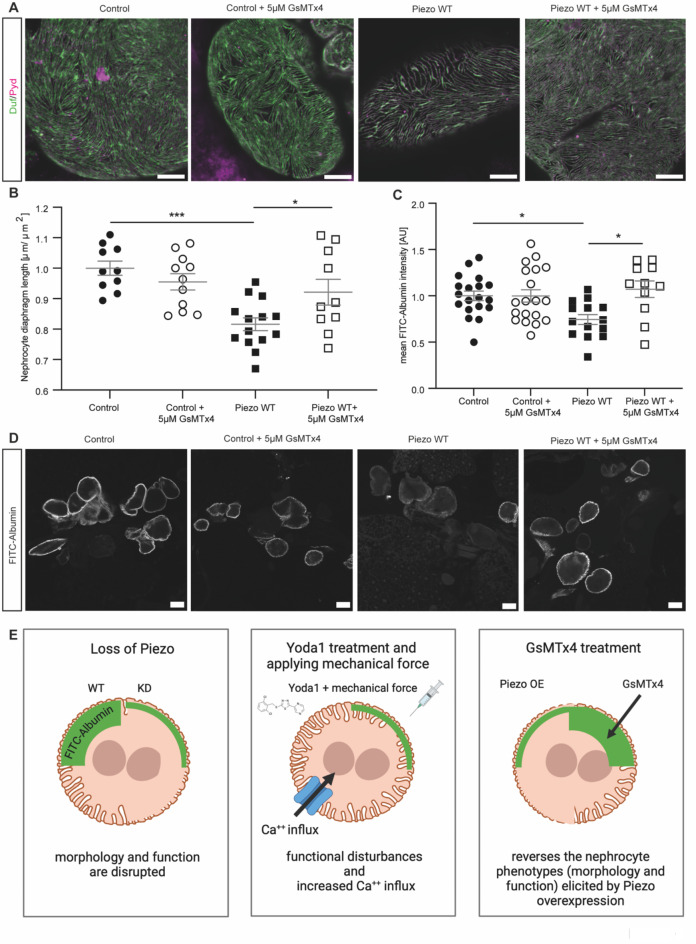Fig. 6.
GsMTx4 treatment reverses the phenotypes observed in nephrocytes overexpressing Piezo wildtype. (A, B) Immunofluorescence staining with Duf and Pyd antibodies reveals a rescue of the morphological changes in adult pericardial cells expressing Piezo wildtype after incubation with 5 μM GsMTx4 for 5 min. Scale bar = 5 μm. 1way-ANOVA with Tukey’s multiple comparison test: *: p < 0.05; ***: p < 0.001. Control: w; sns-Gal4/ + ;UAS-dicer2/ + . Piezo WT: w; sns-Gal4/ + ;UAS-dicer2/UAS-piezo-flag. (C, D) FITC-Albumin uptake assays show a rescue of the observed phenotype in adult pericardial nephrocytes overexpressing Piezo wildtype after 5 min GsMTx4 treatment. Scale bar = 25 μm. 1way-ANOVA with Tukey’s multiple comparison test: *: p < 0.05. (E) Schematic summarising the data. First panel: Loss of Piezo causes a morphological and functional phenotype, which is most severe in adult pericardial cells at 28 °C. Second panel: Pharmacological activation of endogenous Piezo by Yoda1 treatment and applying mechanical force causes functional defects and increased Ca++ influx. Third panel: Overexpression of wildtype Piezo in adult pericardial nephrocytes results in morphological and functional disturbances. These phenotypes seem to be mediated by the mechanosensitive channel activity of Piezo. Treatment of Piezo wildtype overexpressing nephrocytes with GsMTx4 reversed the observed phenotypes. All images have been created with BioRender.com.

